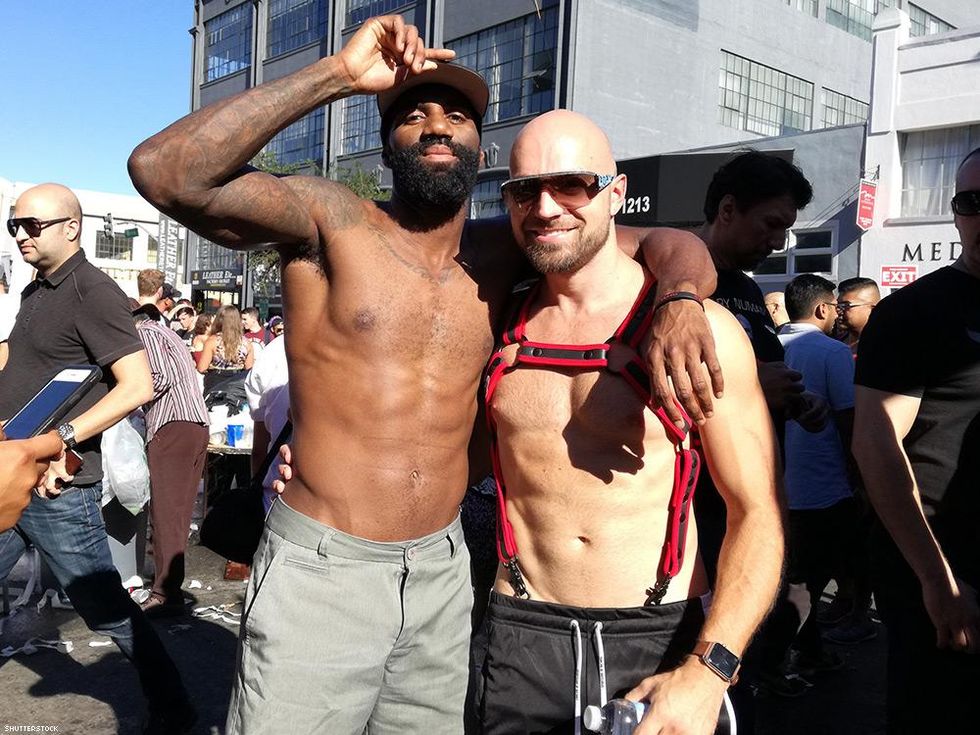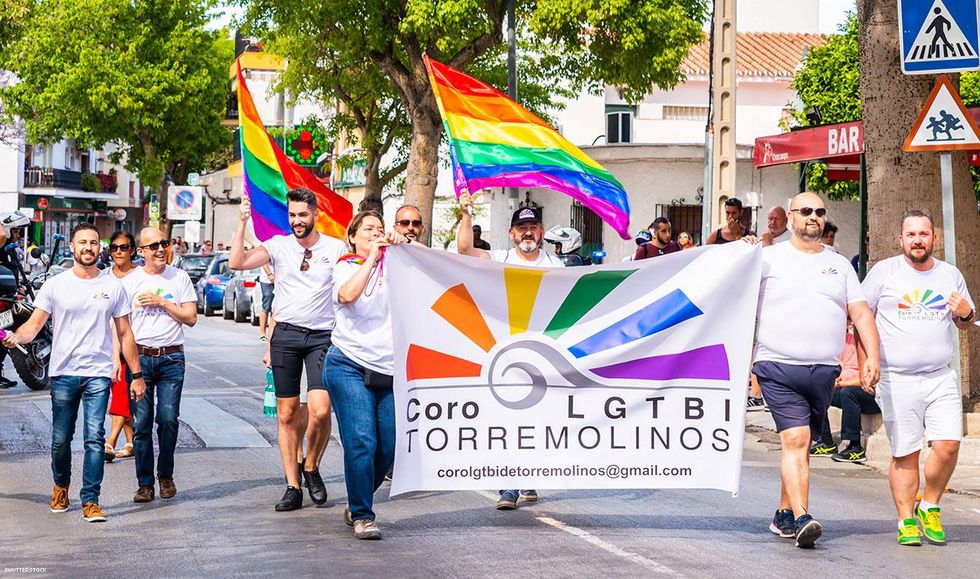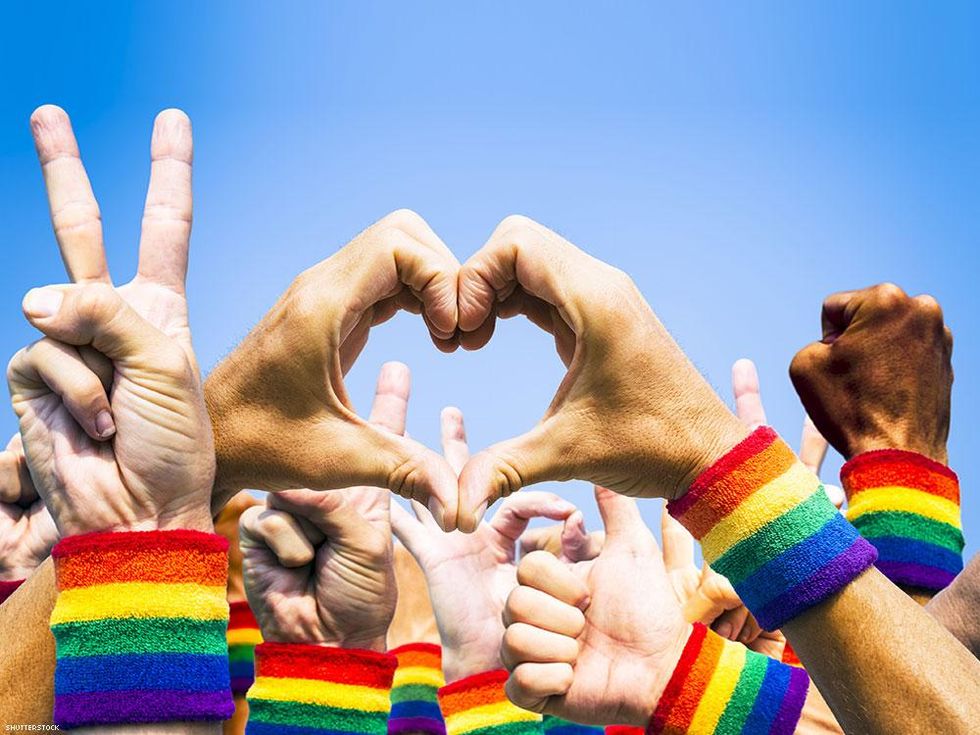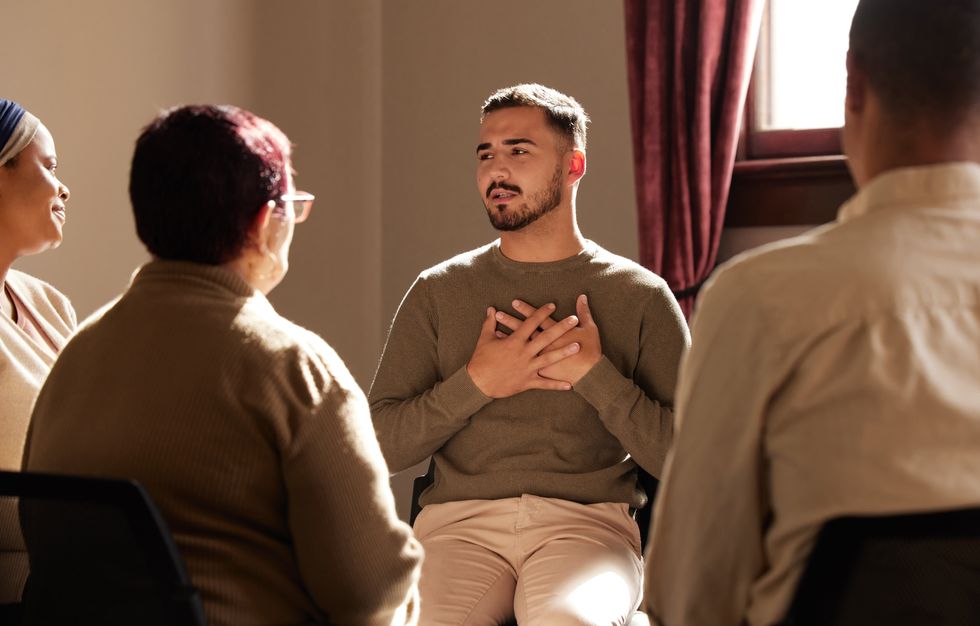Polygyny and polyandry and polycule, oh, my!
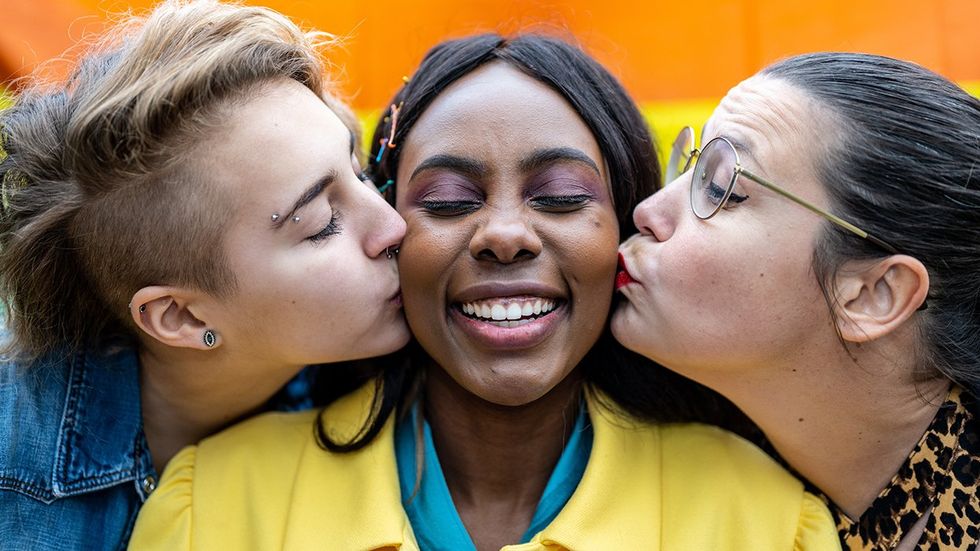
queer friends kissing
We recently posted an article about dating apps for poly couples who want to explore their non-monogamy. In writing that, we remembered that the poly community, much like the LGBTQ+ community as a whole, has many different layers to it that people might not understand or find confusing.
You may have heard of terms like polygamy, polyamory, polygyny, polycule, polyfidelity, or all sorts of different terms that you may or may not know the definition of. Like a lot of terms these days, it can be hard to keep up with them and remember what's what.
Let’s talk a little about the different types of “poly” terms and how they relate to each other while remaining individual.
Polyamory vs. Polygamy

Shutterstock
The key difference between polyamory and polygamy boils down to the plurality of marriage. Polyamory means you have more than one romantic relationship, but polygamy means you have more than one spouse. We’ll talk about some legality issues later on, but polygamous relationships are illegal within the United States. Polyamorous relationships are also not legally recognized as domestic unions, though it still doesn’t stop people from practicing them.
Polygamy vs. Polygyny

Shutterstock
Polygyny refers to a form of marriage where only the man has multiple wives simultaneously. Polygamy in general means either a man or a woman can be married to two or more people at the same time. Unsurprisingly, this is the most common form of polygamy.
Polygamy vs. Polyandry

Shutterstock
Both polyamory and polygamy refer to the ability for both men and women to engage in other relationships. Where polygyny exists only for men, polyandry is for women who have more than one husband at a time.
Poly vs. Open vs. Swinging relationships

Shutterstock
Being in a polyamorous relationship is different from being in an open one. In an open relationship, there is one couple who engages in sexual play with people outside of their relationship, either together or separately. There is no other emotional or relationship component involved, and oftentimes there are rules that the people they hook up with can also not be among their close friends.
It’s also different from swinging relationships, which usually involve couples swapping sexual partners instead of letting generalized hook-ups occur.
What are some other similarities and differences?

Shutterstock
Many people are aware of polygymous relationships within the Mormon community, but religion in general plays a key factor in the differences as well. Muslims also practice it, though not as frequently, and polygamy is legal in Northern Africa and the Middle East.
Within the poly spectrum, another difference is hierarchy. In polygamous relationships, there’s usually a “primary” spouse that houses more decision-making power, whereas polyamorous relationships typically value more open communication and mutual consent.
Of course, there are a number of similarities between polygamy and polyamory, which is a main cause for all the confusion. They both involve multiple partners and both can be practiced ethically, even though the legality of it is another question. Anyone involved in these types of relationships also has to have a strong hold on their emotions, especially those revolving around jealousy, and has to stay prepared to face societal stigma at almost all times.
What are other types of polyamory?

Shutterstock
In polygamy, things are broken down between the two primary forms of polygyny and polyandry. Another difference between polygamy and polyamory is that polyamory comes in many various forms, including, but not limited to:
- Triad: When couples choose to date others or singles together, essentially becoming a “triad” or a “throuple.” Sometimes, women who are open to dating couples are called “unicorns,” and men are referred to as “dragons.”
- Quad: This usually means two different couples date each other to form a long-term relationship known as a “quad.” Not all of these relationships involve sex, especially when asexual individuals are involved.
- Vee: When one person dates two people separately. Their partners are “metamours” who may never meet, which is also known as a “parallel poly.” If they do meet, they do not date.
- Solo Polyamory: Someone who likes to live alone or maintain their individuality but still engages in multiple partnerships.
- Polycule: Refers to the network of poly couples and includes a relationship map and sometimes meetings or discussions.
- Polyfidelity: When the polyamorous relationships become “closed,” meaning there are no new additions and whoever’s dating is dating.
- Polyflexible: This refers to someone who is happy being in either a monogamous or polyamorous relationship.
Aren't there legal implications involved?

Shutterstock
Although Utah decriminalized polygamous relationships, they’re still federally illegal in the United States. It’s also illegal in most European countries and Canada, though the bulk of the legality stems from concerns revolving around potential abuse and unequal power dynamics.
This, like many issues, boils down to misconceptions. In polygamy, people think it’s inherently oppressive or exploitative, though in reality, it can help align better communication and more self-assurance. People also assume it’s either a disorder or a form of cheating, neither of which is true.
Unfortunately, within the legal realm of things, when polygamy is legal, it’s usually only polygyny that gets the pass. This Encyclopedia entry breaks down the global legality, or lack thereof, as of December 2022.
I think I want to explore polyamory or polygamy, now what?

Shutterstock
First and foremost, remember consent is sexy, even here. Don’t force being poly on your partner, and be willing to let that relationship go if being poly is something you really identify with. Loving Without Boundaries is a great online resource with lots of free tools in addition to masterclasses and a podcast, as is PolyInfo.org.
If you’re looking for some good books, check out More Than Two: A Practical Guide to Ethical Polyamory by Franklin Veaux and Eve Rickert and The Ethical Slut: A Practical Guide to Polyamory, Open Relationships & Other Adventures by Janet W. Hardy and Dossie Easton.
As with a lot of other forms of identity, sexuality, and relationship dynamics, you’re not alone if you’re experiencing any interest in polyamory or polygamy. Understanding the difference between the two is a crucial way to help move the conversation forward and helps us all move toward a more open-minded and respectful society.

















































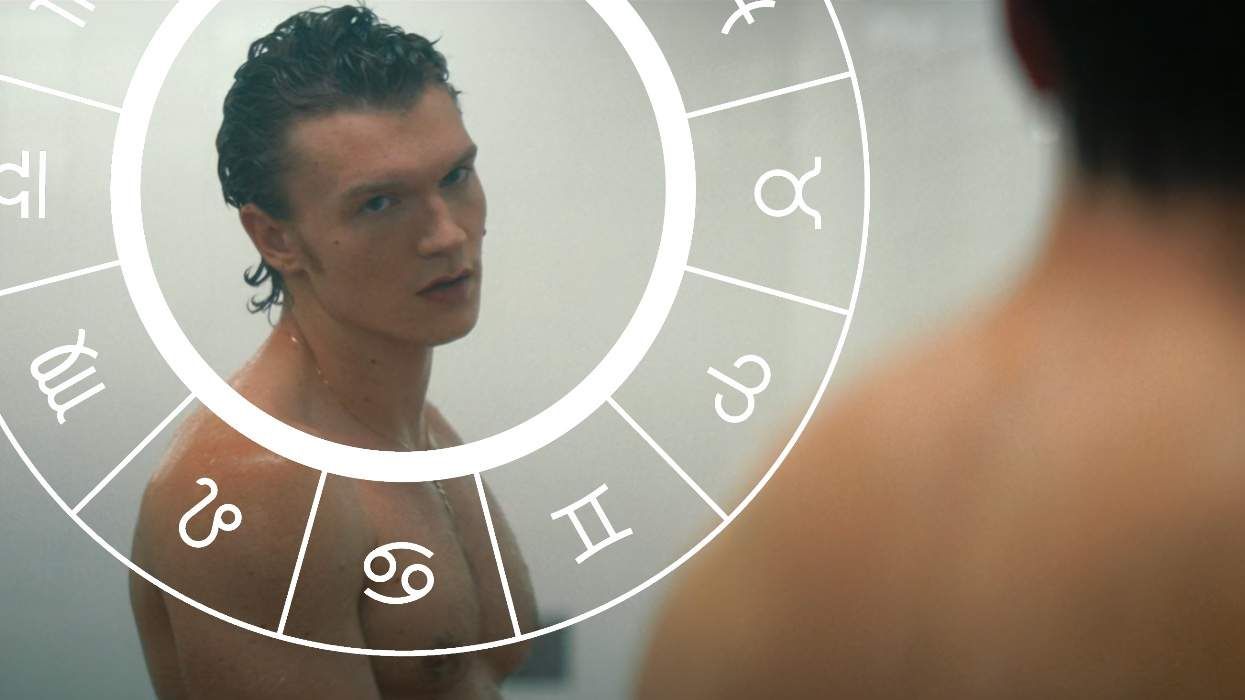

 35 bisexual pop anthems we have on constant repeatYouTube.com/Binoy
35 bisexual pop anthems we have on constant repeatYouTube.com/Binoy








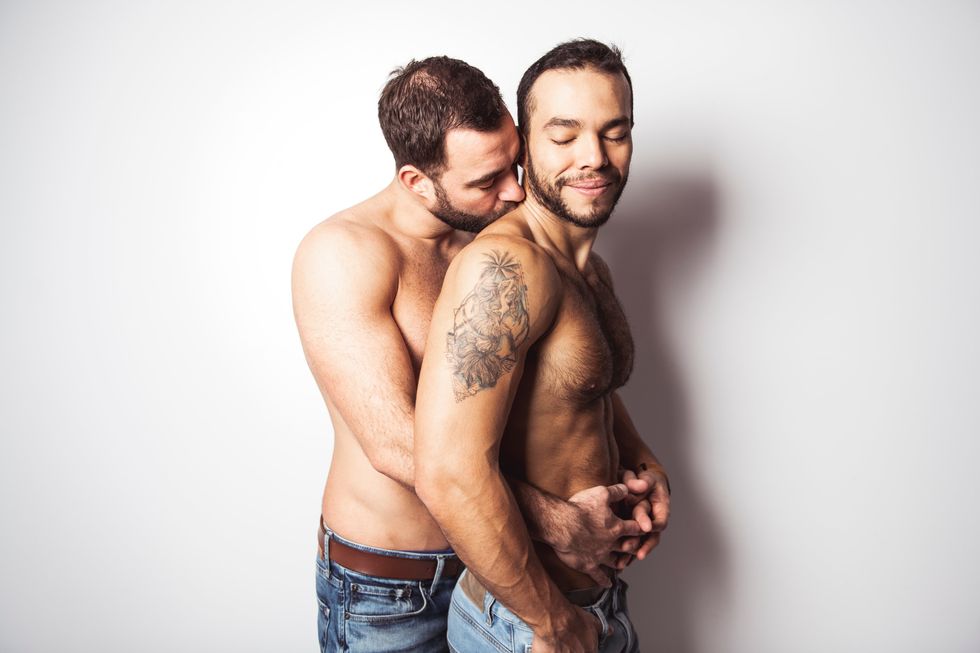

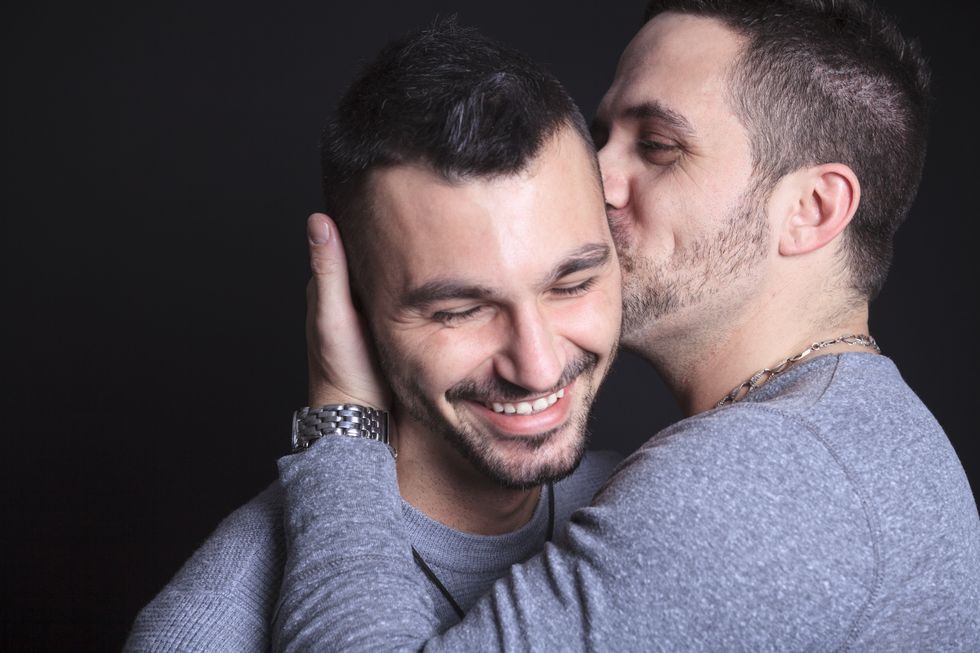







 A couple kisses in the middle of the street during the Christopher Street Day ; Men seen kissing during the 2023 Pride Barcelona Parade.Yerchak Yauhen/SOPA Images/LightRocket via Getty Images; imone Boccaccio/SOPA Images/LightRocket via Getty Images
A couple kisses in the middle of the street during the Christopher Street Day ; Men seen kissing during the 2023 Pride Barcelona Parade.Yerchak Yauhen/SOPA Images/LightRocket via Getty Images; imone Boccaccio/SOPA Images/LightRocket via Getty Images




